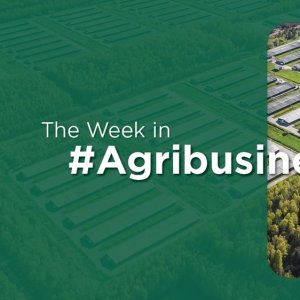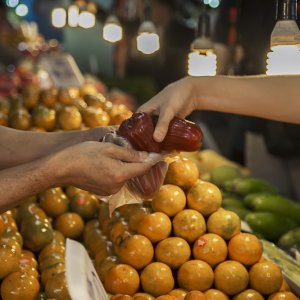A Productive and Collaborative Chain, From Field to Table

STORY INLINE POST
A good agronomic management of corn production is the beginning of a cycle that allows Mexicans to have healthier food at our tables. The one thing that I know for certain from my career is that this is possible thanks to collaboration.
If someone pauses to observe the operation of a food production chain, they can see that each link depends on the other in a particular way and one of the factors that keeps everything together and increases the possibility of success is good crop management.
As an example, in cattle and milk production, this begins with the farmer and precision agriculture. This last consists of a series of good farming practices that make the most of resources, such as water and soil, that generate bigger production, of fodder to feed cattle, which leads to more liters of milk and pounds of meat that arrive at our tables in a sustainable way and with a lower cost of production for farmers. See how everything is linked together?
This process is a collaboration that involves growers and farmers, in addition to a multidisciplinary team comprising nutritionists, assessors and machinery suppliers, whose aim is to achieve resource optimization and higher food quality. Without these good practices and teamwork, important moments of our lives, such as family gatherings, where we enjoy food, won’t be possible; or at least, not as we know it now.
As we are aware of the need to preserve our food security, agricultural technology companies are looking for solutions to meet the needs of milk industry producers. At Syngenta Seeds, we are implementing an innovative solution through a program that aims to provide mentoring and accompaniment to this important sector. I am speaking about Ensilaje de Maíz de Alto Valor (High Value Corn Silage) (EMAV), which helps farmers to improve their profit per each liter of milk produced sustainably through the generation of highly nutritional silage. With this, the cost of feeding cattle is reduced by a high percentage, facilitating health and enhancing the quality and safety of milk, resulting in the offer of healthful food for Mexican families.
These practices can benefit the small farmer and also big milk producers, creating a productive chain that begins in the field and finishes with the food that we have on our tables every day. As I said at the beginning, everything is linked, and it is only possible due to collaboration.
Another example is the urgency of preserving our fields, and we need the views of new generations of younger people to achieve it. Agriculture is one of the world’s oldest activities and the agricultural sector is also one of the most resilient, as we saw during the pandemic when we demonstrated that we can innovate and pivot during adverse situations, such as mobility limitations, transport issues and restrictions at borders. But we need to attract the interest of new generations to ensure the future of agriculture.
In Mexico, it is estimated that managers of Rural Economic Units on average are 54.6 years old and almost 60% are in their 50s. This means that less than 40% are considered young. Is there a way to create attractive agricultural systems for young people to find a future in this industry? I think so. One of the keys lies in improving professionalization of the sector, as is done by big universities in countries like the US, Switzerland and Australia that have succeeded in changing the perception that the world has about agriculture.
In addition, there is a huge responsibility on private companies to promote the recruitment and training of young professionals who arrive in the sector looking for a long-term career and find in the field a source of sustainable and attractive income. We also have to adopt technology and good practices like precision farming to achieve a high yield corn performance like that which happens in Iowa’s fields.
Do you think this is possible for agriculture in Mexico? Let me share the relevant data. According to GCMA and the USDA, in 2022, the states of Sinaloa (11.9 TM/HA), Chihuahua (12.6 TM/HA) and Jalisco (12.5 TM/HA) surpassed the average corn yield in countries like Argentina (7.9 TM/HA) and the US (10.8TM/HA).
As you can see, the path is clear. Mexico has to collaborate in every way so that more states in the country can achieve these numbers, for more young professionals to arrive at the field better prepared and, especially, to achieve food safety through collaboration with our growers and the supply chain. Let’s join efforts and strengthen our commitment to Mexican families, accompanying and helping growers and farmers to deliver healthier food to our tables.
























